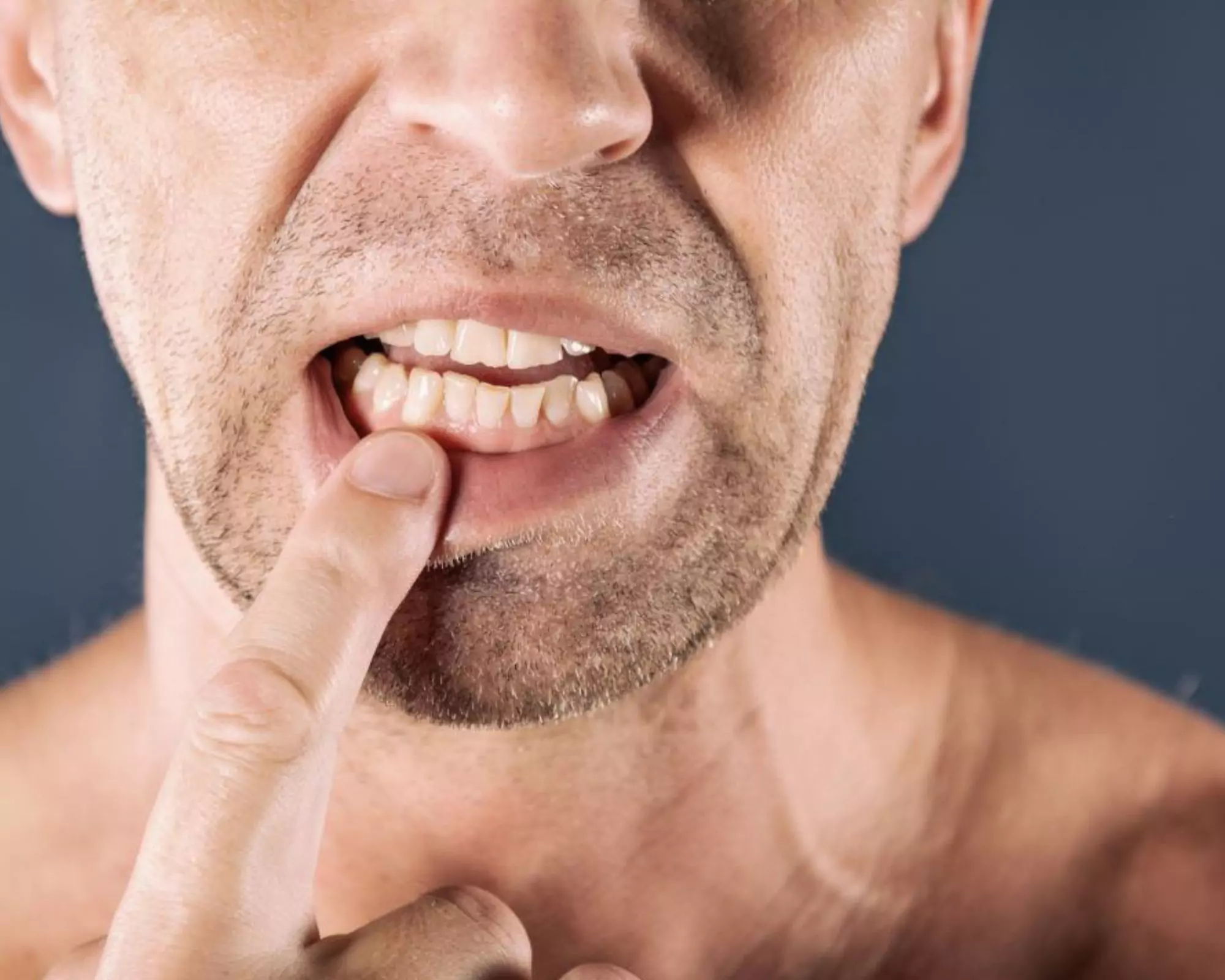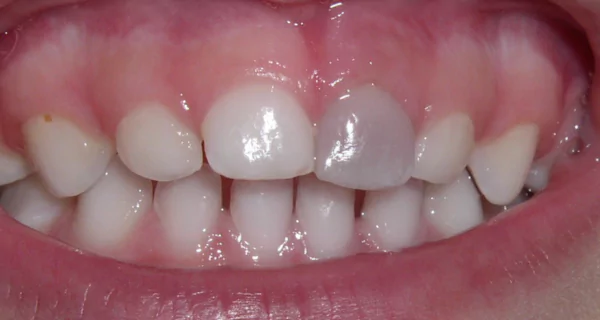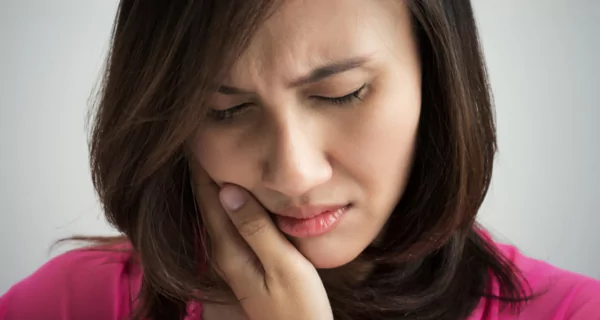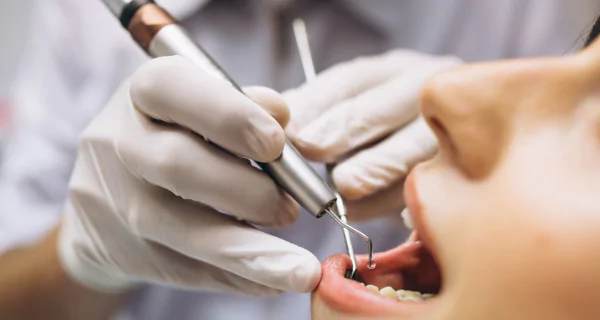Last Updated on: 19th September 2025, 12:36 pm
Learn about a bruised tooth: its causes, symptoms, and treatments. Discover how to heal a bruised tooth and prevent further damage effectively.
Have you ever bitten into something hard like a piece of candy or an unexpected bone in your food and felt a sudden, sharp pain in your tooth? That uncomfortable, lingering ache that follows might be more than just a passing irritation. It could be a sign of a bruised tooth, also known as sprained tooth syndrome.
This guide will explore the causes, symptoms, treatments, and prevention of a bruised tooth to help you find relief and protect your oral health.
What is a bruised tooth?
A bruised tooth happens when the supporting structures of the tooth experience excessive force or impact, resulting in irritation and pain. Unlike a cracked or chipped tooth, a bruised tooth remains physically intact but sustains damage internally.
The periodontal ligaments, which anchor the tooth to the bone and cushion the impact of chewing, can become strained or injured when subjected to extreme pressure. This often occurs from actions like biting down on something unexpectedly hard.
The excessive force not only stresses these ligaments; they can also interfere with the blood supply to the tooth. This disruption may lead to heightened sensitivity, changes in tooth color, and, in severe cases, potential nerve damage if not addressed promptly.
Understanding this condition is key to ensuring proper care and preventing complications.
What causes a bruised tooth?
Bruised teeth often result from external force or repeated stress. Here are the most common causes:
- Trauma: A fall, collision, or blow to the face can damage your teeth, even if there’s no visible crack or fracture. Athletes, especially those in contact sports, are particularly at risk.
- Teeth grinding (bruxism): Repeated pressure from clenching or grinding, especially during sleep, can strain the ligaments.
- Biting down on hard objects: Chewing ice, hard candy, seeds or even accidentally biting down on unexpected hard objects can overstress the tooth. Also regularly chewing on nails can apply unnatural force to the teeth.
- Dental procedures: Treatments like fillings, crowns, or surgeries can temporarily strain the ligaments, especially if the bite is altered.
- Prolonged stress on one tooth: Misaligned teeth or poor dental work can cause uneven bite pressure, putting extra strain on certain teeth, making them more susceptible to bruising.
- Tooth infections: Infections or abscesses can irritate the surrounding ligaments, mimicking the pain of a sprain.
- Sinus issues: Allergies, colds, or sinus infections can create referred pain that feels like a sprained tooth.
What are the symptoms of a bruised tooth?
Recognizing the symptoms of a bruised tooth can help you take action early, preventing further complications.
- Tooth discoloration: A bruised tooth can change color, appearing darker than usual. Shades like gray, purple, or blue may develop due to damage to the blood vessels inside the tooth.
- Sensitivity: You may feel discomfort when biting down or when consuming hot or cold foods and beverages.
- Pain while chewing or biting: The pain is often localized to the affected tooth, especially during activities that involve applying pressure.
- Swelling around the tooth: The surrounding gum tissue may appear inflamed, swollen, or tender to the touch.
- Persistent pain: A constant, lingering ache that remains after the trauma.
Why is a diagnosis important?
These symptoms can sometimes mimic other dental problems, like cracks, infections, or nerve issues. A professional evaluation by a dentist is essential to determine if the tooth is bruised or if another condition is causing the discomfort. Acting promptly can help relieve pain and prevent more severe issues, such as prolonged sensitivity or the need for more extensive treatment.
Treatment for a bruised tooth
While a bruised tooth can often heal naturally, the severity of the injury determines the best course of action. Here there are effective ways to manage and treat a bruised tooth:
Home care
- Pain management: To relieve discomfort, over-the-counter pain relievers like ibuprofen or acetaminophen can be effective. These medications also reduce inflammation in the surrounding gum tissues. However, they don’t address the root cause, so consider this a temporary solution while you seek professional advice.
- Cold compress: Applying a cold compress to the outside of your cheek near the bruised tooth can help reduce swelling and provide temporary pain relief. Use an ice pack wrapped in a cloth and hold it against the affected area for 15–20 minutes.
- Give the tooth a break: Resting the bruised tooth is crucial for healing. Avoid chewing hard or crunchy foods and opt for soft options like soups, mashed vegetables, and smoothies. This prevents further stress on the tooth and allows the ligaments to recover.
Professional dental treatments
If the pain or symptoms persist or worsen, it’s essential to visit a dentist. They can perform a detailed assessment and recommend specific treatments, such as:
- Avoid aggravating factors: If the bruising is caused by habits like grinding your teeth (bruxism) or dental misalignments, preventive measures are key. A custom mouthguard can protect your teeth from nighttime grinding, while corrective dental work can help align your bite and reduce excessive pressure on individual teeth.
- Dental health services: Your dentist can recommend:
- X-rays to identify internal damage or fractures.
- Root canal therapy if the tooth’s nerve has sustained severe damage.
- Splinting to stabilize the tooth in cases of significant trauma.
How long does it take to heal a bruised tooth?
The recovery time for a bruised tooth depends on the severity of the injury and individual circumstances. In many cases, symptoms like pain and sensitivity diminish within a few days to a couple of weeks. However, the full healing process, including the repair of the damaged ligament and return to normal function, can take several weeks or even months.
- Mild bruising: may resolve within a few days to a week with proper care and rest.
- Moderate bruising: can take a few weeks to heal, especially if the periodontal ligament is involved.
- Severe cases: may require professional intervention and take months to fully recover.
During the healing process, it’s essential to protect the tooth from additional stress or damage. Regular dental checkups can ensure that healing progresses as expected.
Preventing tooth bruising
Taking proactive steps to protect your teeth can help prevent bruising and minimize the risk of dental injuries. Here are some practical measures to keep your teeth healthy and resilient:
- Wear a mouthguard: Athletes should wear a properly fitted mouthguard during contact sports. Similarly, if you grind your teeth at night, a custom nightguard can protect your teeth from damage.
- Avoid chewing hard objects: Chewing on hard items like ice, pens, or non-food objects places unnecessary stress on your teeth.
- Maintain good oral hygiene: Healthy teeth are stronger and less prone to damage.
- Correct misaligned teeth: If you have an uneven bite, consult with an orthodontist. Proper alignment reduces the risk of uneven pressure on individual teeth.
- Be cautious during dental work: If you’ve had recent dental procedures, follow your dentist’s aftercare instructions closely to avoid accidental bruising.
A bruised tooth may appear to be a minor issue, but it’s crucial to take it seriously to avoid more serious complications later on. Recognizing the causes and symptoms, seeking prompt care, and adopting preventive measures are key to maintaining strong and healthy teeth. If the discomfort persists or intensifies, be sure to visit your dentist—they’re the most reliable source for preserving your dental health and keeping your smile bright!
Frequently Asked Questions
Can a bruised tooth heal on its own?
Is a bruised tooth a serious problem?
What does a bruised tooth look like?
Can you stop a bruised tooth from changing color?
When should I see a dentist about a bruised tooth?
Share
References
1. Anthony, K. (2018, september 29). Bruised teeth. Healthline. https://www.healthline.com/health/bruised-tooth
2. Cleveland clinic staff. (2024, august 30). Tooth luxation. Cleveland Clinic. https://my.clevelandclinic.org/health/diseases/21770-tooth-luxation
3. Huang, R., Zhou, C., Zhan, L. (2024, september 26). Experts consensus on management of tooth luxation and avulsion. Int J Oral Sci 16, 57 https://doi.org/10.1038/s41368-024-00321-z
4. Thompson, L. (2016, february 29). Tender teeth: What’s behind your aching smile. Vital Record. https://vitalrecord.tamu.edu/tender-teeth-whats-behind-your-aching-smile/
-
Dr. Yeidy Carolina Mesa [Author]
DDS Yeidy Carolina Mesa Passionate Dentist | Advocate for Accessible Oral Health Education Graduating from Universidad CES in 2022, I am a dedicated general dentist with a lifelong passion for helping others and making a meaningful impact in the world. My journey into dentistry began at the age of 7, inspired by my own experience with braces and overcoming a fear of the dentist. This personal journey shaped my mission to help patients conquer their own dental anxieties and embrace a healthier,...
View all postsRecent Posts
-
Nayibe Cubillos M. [Medical Reviewer]
Pharmaceutical Chemestry |Pharmaceutical Process Management | Pharmaceutical Care | Pharmaceutical Services Audit | Pharmaceutical Services Process Consulting | Content Project Manager | SEO Knowledge | Content Writer | Leadership | Scrum Master
View all posts
A healthcare writer with a solid background in pharmaceutical chemistry and a thorough understanding of Colombian regulatory processes and comprehensive sector management, she has significant experience coordinating and leading multidisciplina...





















